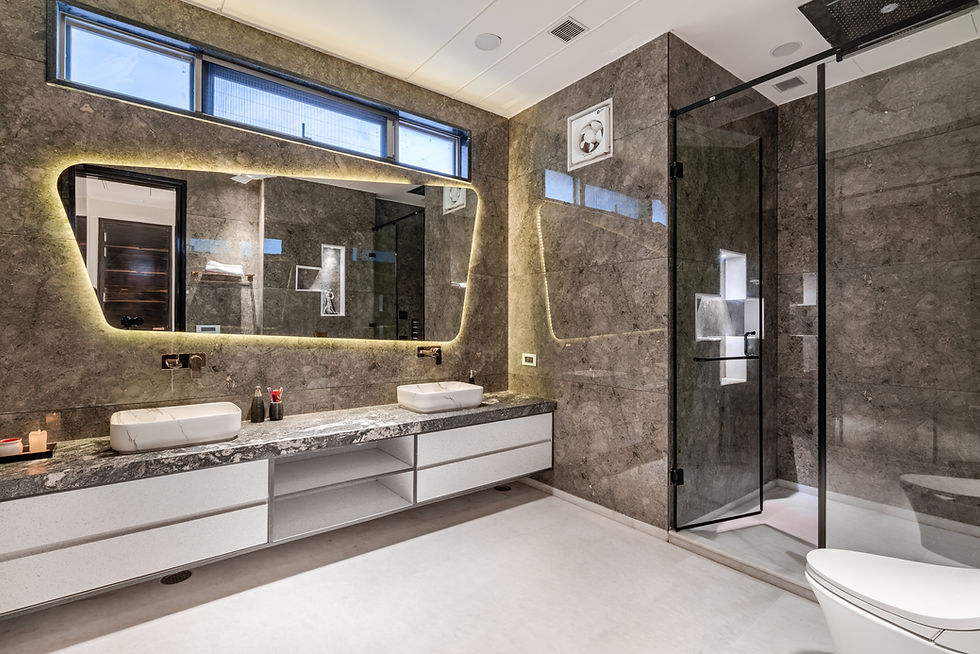
The history of water-saving toilets: A Tech Enthusiast's Guide
Share
In the modern age, where sustainability and technology go hand in hand, understanding the evolution of everyday appliances is crucial. One such fixture that has seen significant technological advancements is the water-saving toilet. The journey of these toilets from mere waste-disposal units to high-tech and eco-friendly solutions is both fascinating and significant.

Early Innovations in Toilet Technology
The concept of a water-efficient toilet isn't new. In fact, the roots of this idea can be traced back centuries. Early civilizations, such as the Romans, had rudimentary systems for waste management. However, the modern concept of a toilet began to evolve in the 16th century with Sir John Harington's invention of a flush toilet. Despite his innovation, widespread adoption was slow.
It wasn't until the late 19th and early 20th centuries that toilets became a household staple. These early models, however, were far from efficient, using excessive amounts of water per flush. This inefficiency paved the way for future innovations.
The Advent of Low-Flow Toilets
The environmental movements of the 1970s and 1980s brought about a newfound awareness of resource conservation. As a result, manufacturers began to explore ways to reduce water usage in toilets. This led to the development of low-flow toilets, which became widely adopted in the 1990s.
Low-flow toilets were designed to use significantly less water per flush than their predecessors. By the early 1990s, regulations had been put in place in countries like the United States to limit toilets to 1.6 gallons per flush. This was a significant reduction from the 3.5 to 7 gallons that older models used.
Technological Advancements and Dual-Flush Systems
With technology constantly evolving, the toilet industry embraced new innovations to further improve efficiency. One of the most notable advancements was the introduction of the dual-flush system. This system allows users to select a flush based on the type of waste, effectively reducing water usage by up to 67%.
The dual-flush system exemplifies how technological innovation can lead to significant environmental benefits. By providing users with options, it not only conserves water but also empowers consumers to make eco-friendly choices.
Smart Toilets and the Future
As we look to the future, the integration of technology in toilets continues to advance. Smart toilets are now becoming a reality, equipped with features such as sensors, self-cleaning systems, and even health monitoring capabilities. These toilets are designed to provide an unparalleled level of convenience and efficiency.
For tech enthusiasts, the possibilities are endless. Imagine a toilet that can analyze waste to provide health insights or one that can be controlled via a smartphone app to customize user preferences. These innovations are not only exciting but also promise to further reduce water usage and promote sustainability.
The Role of Legislation and Consumer Awareness
Legislation has played a crucial role in promoting the adoption of water-saving toilets. Governments worldwide have implemented regulations to encourage the use of efficient plumbing fixtures. In addition, consumer awareness has grown significantly, with more individuals seeking out sustainable solutions for their homes.
For tech professionals and enthusiasts, this presents an opportunity to delve deeper into the intersection of technology and sustainability. By understanding the history and evolution of water-saving toilets, one can appreciate the impact of technological advancements on everyday life.
For those interested in exploring further, consider checking out resources like the low-flow toilets guide by This Old House for a comprehensive understanding of these fixtures.
Conclusion: The Impact of Water-Saving Toilets
The history of water-saving toilets is a testament to human ingenuity and the relentless pursuit of efficiency. From the early flush toilets to today's smart systems, the evolution of these fixtures highlights the importance of technological innovation in promoting sustainability.
For tech enthusiasts, the story of the water-saving toilet is not just about conserving water but also about the potential for future advancements. As we continue to innovate and integrate technology into our daily lives, the humble toilet stands as a symbol of progress and the power of sustainable living.

FAQs
Why are water-saving toilets important?
They significantly reduce water consumption, leading to environmental conservation and lower utility bills.
How do dual-flush systems work?
They offer two flushing options, using less water for liquid waste and more for solid waste.
Are smart toilets worth the investment?
For tech enthusiasts, they offer advanced features and efficiency, making them a valuable addition to modern homes.
This article contains affiliate links. We may earn a commission at no extra cost to you.
